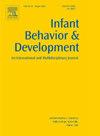Accent variation and the development of speech and language abilities
IF 1.9
3区 心理学
Q3 PSYCHOLOGY, DEVELOPMENTAL
引用次数: 0
Abstract
Accent variation is a central feature of human language. As adults, we readily adapt to different varieties of our native language, but we also use accent information to make a variety of social inferences. Thus, our treatment of accents sits squarely at the intersection of language and social processing. Despite the ubiquity of accent variation and its importance in our mental lives, it was long absent from studies in the field of infant development. Although the complexities of bilingual input were recognized, the study of monolingual language development proceeded as if all infants were exposed to a single variety of their native language. This perspective shaped our theories of speech and language development. The first study to explore infants’ perception of accents was published in 2000. Over the past 25 years, there has been a steady increase in work on infants’ treatment of new accent varieties, their handling of multiple varieties in their natural input, and their accent-based social inferences. There is much left to be learned about just how infants navigate the rich tapestry of speech variation in their environments, but this work has already provided an important window into the nature of infants’ speech representations and has upended our understanding of how early links between language and social variation are formed. We conclude our review by highlighting how understanding infants’ treatment of accent variation is critical for developing models that can account for efficient speech and language development in linguistically diverse contexts.
口音变化与言语和语言能力的发展
口音变化是人类语言的一个主要特征。作为成年人,我们很容易适应不同种类的母语,但我们也会使用口音信息来进行各种社会推断。因此,我们对口音的处理正好处于语言和社会处理的交叉点。尽管口音变异无处不在,在我们的心理生活中也很重要,但在婴儿发育领域的研究中却长期缺乏口音变异。虽然双语输入的复杂性已经被认识到,但单语语言发展的研究就好像所有的婴儿都暴露在单一的母语中一样。这一观点塑造了我们关于言语和语言发展的理论。第一个探索婴儿对口音感知的研究发表于2000年。在过去的25年里,关于婴儿对新口音变体的处理、他们在自然输入中对多种变体的处理以及他们基于口音的社会推断的工作稳步增加。关于婴儿如何在其环境中驾驭丰富多彩的语言变化,还有很多有待学习的地方,但这项工作已经为婴儿语言表征的本质提供了一个重要的窗口,并颠覆了我们对语言和社会变化之间的早期联系是如何形成的理解。我们通过强调理解婴儿对口音变化的处理对于开发能够解释语言多样性背景下有效言语和语言发展的模型至关重要来总结我们的综述。
本文章由计算机程序翻译,如有差异,请以英文原文为准。
求助全文
约1分钟内获得全文
求助全文
来源期刊

Infant Behavior & Development
PSYCHOLOGY, DEVELOPMENTAL-
CiteScore
4.10
自引率
4.80%
发文量
94
期刊介绍:
Infant Behavior & Development publishes empirical (fundamental and clinical), theoretical, methodological and review papers. Brief reports dealing with behavioral development during infancy (up to 3 years) will also be considered. Papers of an inter- and multidisciplinary nature, for example neuroscience, non-linear dynamics and modelling approaches, are particularly encouraged. Areas covered by the journal include cognitive development, emotional development, perception, perception-action coupling, motor development and socialisation.
 求助内容:
求助内容: 应助结果提醒方式:
应助结果提醒方式:


